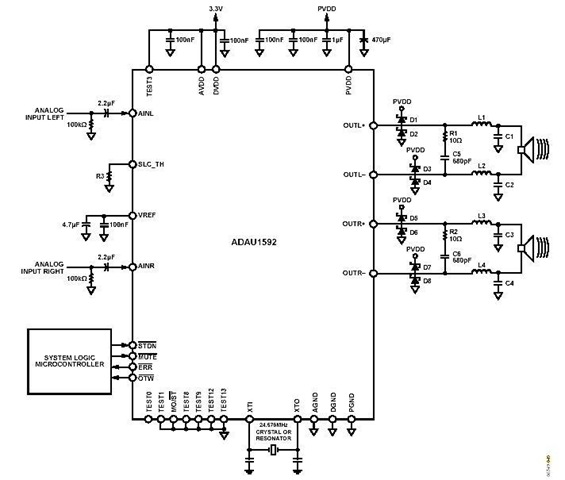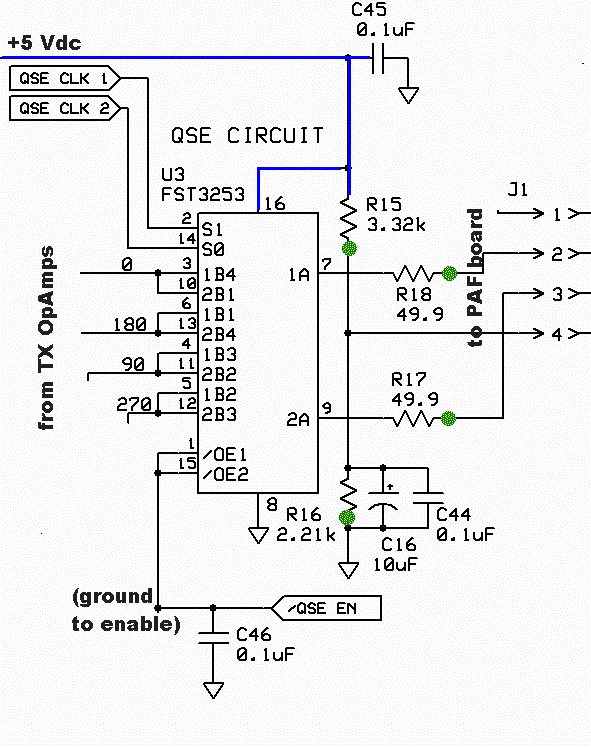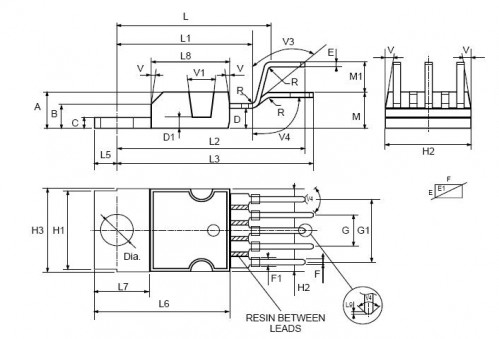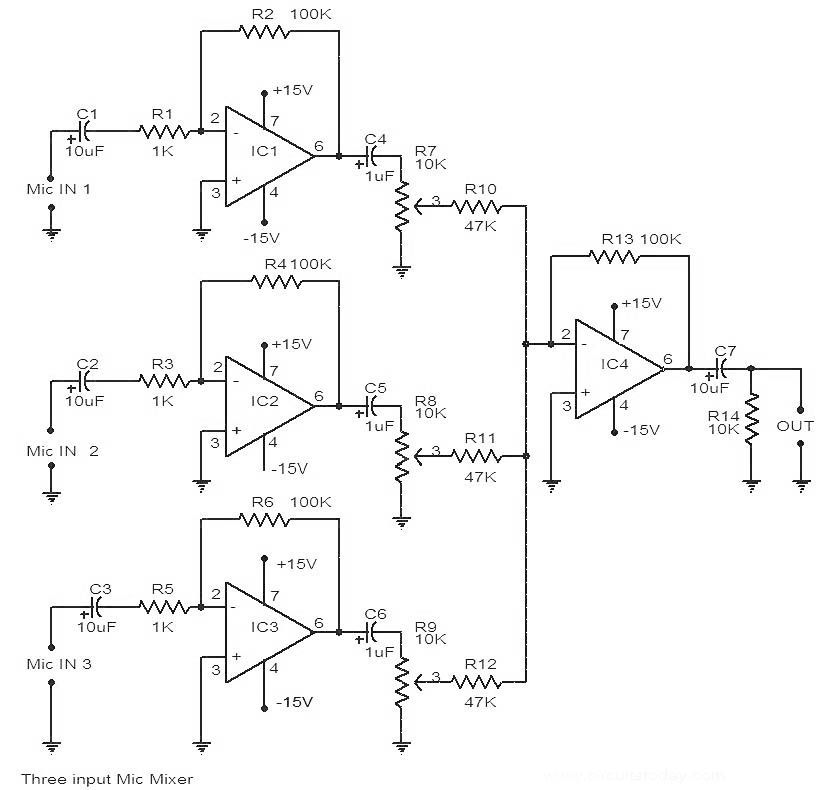
Audio Mixer

Three audio circuits are combined in the circuit shown. Each input is connected to its own level potentiometer (R1, R2, or R3), and they are combined at the gate of FET Q1. The output of Q1 is coupled to the external audio amplifier through emitter-follower Q2 and capacitor C6.
The circuit features three distinct audio input channels, each managed by a potentiometer (R1, R2, R3) that allows for individual level adjustments. These potentiometers serve as variable resistors, providing control over the amplitude of the audio signals before they converge at the gate of the field-effect transistor (FET) Q1. The FET is utilized for its high input impedance and low output impedance characteristics, making it an ideal choice for audio signal processing.
Upon reaching the gate of Q1, the combined audio signals are amplified. The output from Q1 is then directed to the emitter-follower configuration formed by transistor Q2. This configuration serves to buffer the output, ensuring that the signal maintains its integrity while providing sufficient current drive to the subsequent stage, which is the external audio amplifier.
Capacitor C6 plays a critical role in this arrangement by blocking any direct current (DC) component in the output signal while allowing the alternating current (AC) audio signal to pass through. This ensures that only the audio frequency components are fed into the external amplifier, preventing any potential distortion or damage that could arise from DC levels.
Overall, this circuit design effectively combines multiple audio sources, allowing for flexible control over each channel's volume and ensuring a clean, amplified output suitable for further processing or amplification in an audio system. Three audio circuits are combined in the circuit shown. Each input is coupled to its own level potentiometer (Rl, R2, or R3) an d they are combined at the gate of FET Ql. The output of Ql is coupled to the external audio amplifier through emitter-follower Q2 and capacitor C6.
The circuit features three distinct audio input channels, each managed by a potentiometer (R1, R2, R3) that allows for individual level adjustments. These potentiometers serve as variable resistors, providing control over the amplitude of the audio signals before they converge at the gate of the field-effect transistor (FET) Q1. The FET is utilized for its high input impedance and low output impedance characteristics, making it an ideal choice for audio signal processing.
Upon reaching the gate of Q1, the combined audio signals are amplified. The output from Q1 is then directed to the emitter-follower configuration formed by transistor Q2. This configuration serves to buffer the output, ensuring that the signal maintains its integrity while providing sufficient current drive to the subsequent stage, which is the external audio amplifier.
Capacitor C6 plays a critical role in this arrangement by blocking any direct current (DC) component in the output signal while allowing the alternating current (AC) audio signal to pass through. This ensures that only the audio frequency components are fed into the external amplifier, preventing any potential distortion or damage that could arise from DC levels.
Overall, this circuit design effectively combines multiple audio sources, allowing for flexible control over each channel's volume and ensuring a clean, amplified output suitable for further processing or amplification in an audio system. Three audio circuits are combined in the circuit shown. Each input is coupled to its own level potentiometer (Rl, R2, or R3) an d they are combined at the gate of FET Ql. The output of Ql is coupled to the external audio amplifier through emitter-follower Q2 and capacitor C6.





